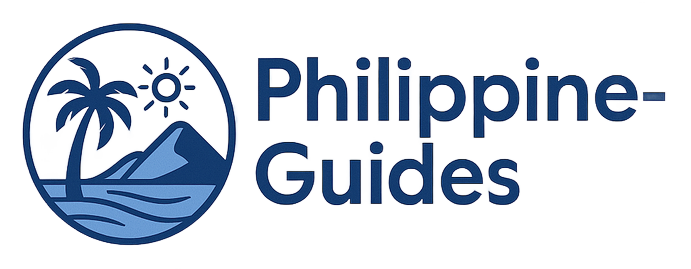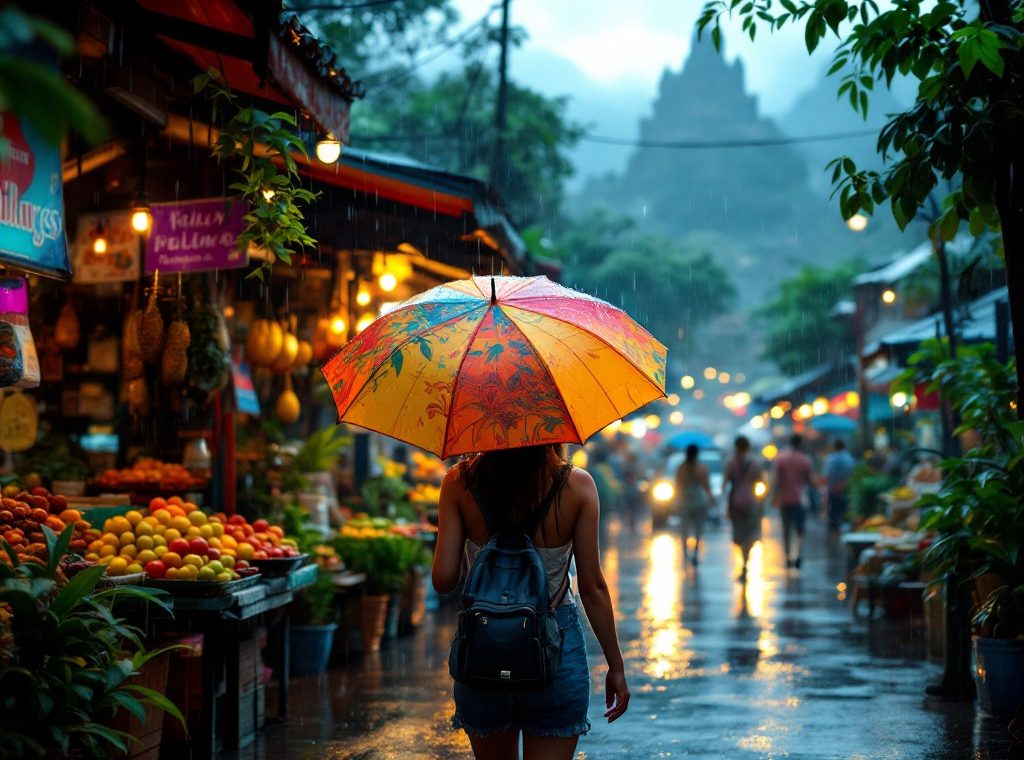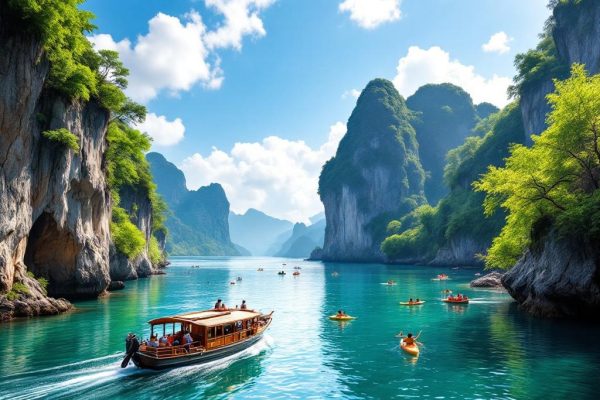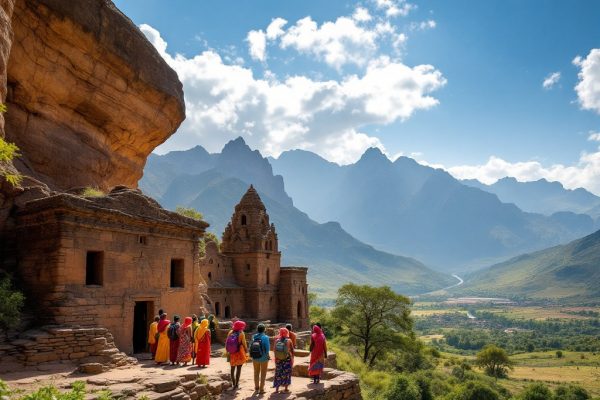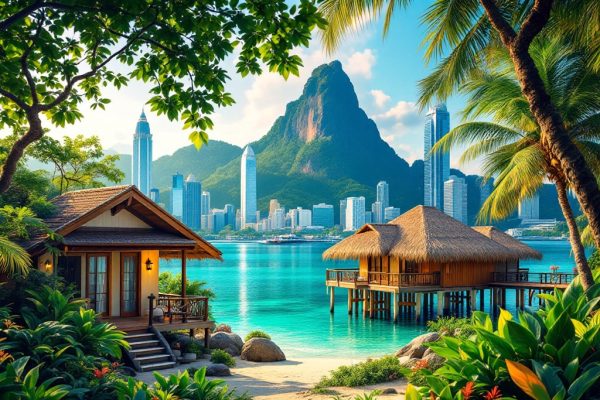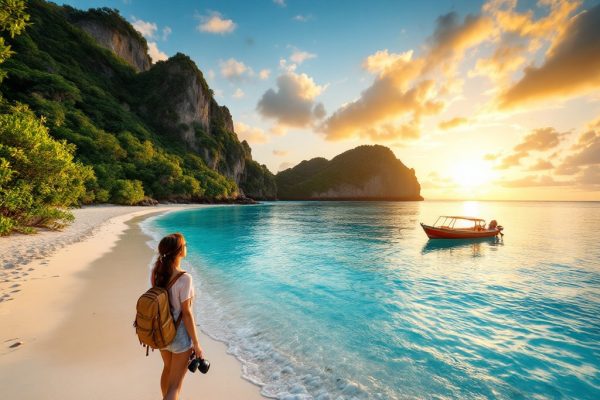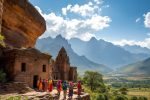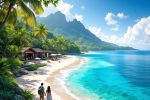Rainy Season in the Philippines: Travel Advice
Dreaming of a Philippine adventure but worried about the rainy season? Don’t let the rain dampen your spirits! From May to October, showers are expected, especially in the north, with typhoon season hitting hard August through January. But with smart planning, your trip can still be unforgettable. Discover drier destinations like Palawan and Cebu, or explore indoor gems in Manila. Learn how to pack smart, stay safe, and make the most of your Philippine experience, rain or shine. Read on to unlock the secrets to a successful rainy season getaway!
Important information
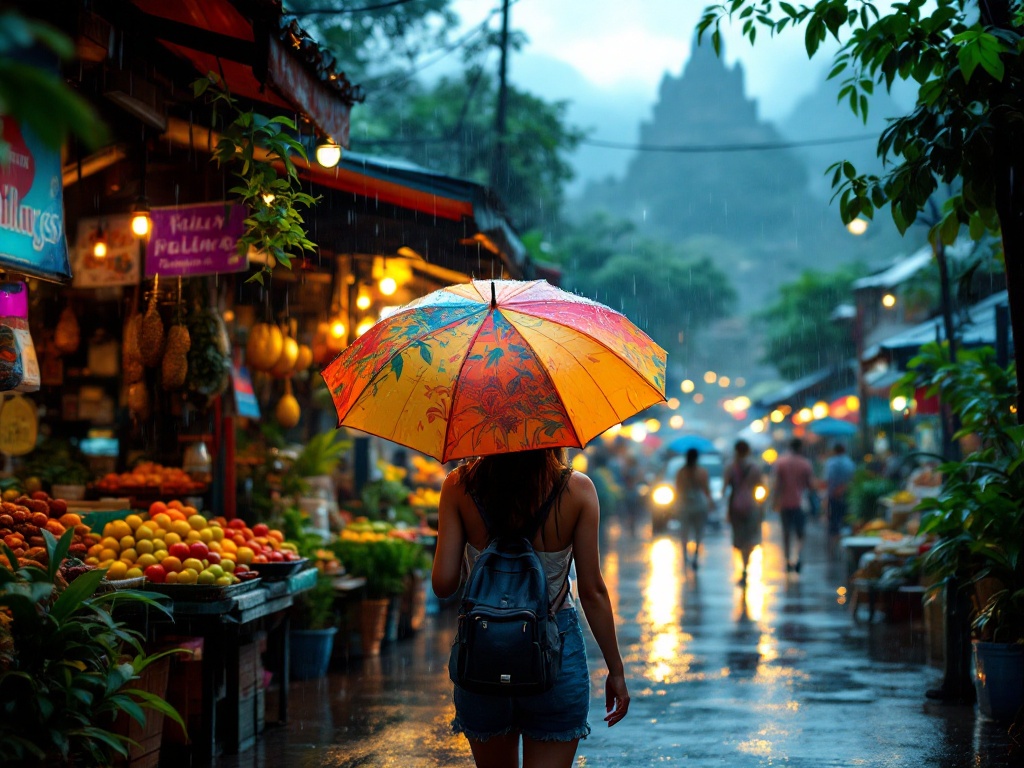
- The Philippines’ rainy season lasts from May to October, with typhoon season occurring between August and January.
- Heavy rain, flooding, and landslides are common during this period, causing travel disruptions. Monitor PAGASA weather forecasts and heed official warnings.
- Pack waterproof gear (raincoat, umbrella, waterproof bag), quick-drying clothes, insect repellent (DEET), and a first-aid kit.
- Consider travel insurance and be prepared to adjust your itinerary. Prioritize public transport over driving whenever possible.
- Central regions like Cebu, Bohol, and Palawan experience less rain than northern areas. Indoor activities like visiting museums, exploring markets, and enjoying local cuisine are good alternatives during downpours.
Rainy Season in the Philippines: Travel Advice
Traveling to the Philippines during the rainy season (May to October) requires some preparation. Expect showers, which can impact outdoor activities, especially beach getaways. Pack waterproof gear like umbrellas and raincoats, and opt for quick-drying clothing. Stay updated on weather forecasts to avoid floods and ensure a safer trip. Be flexible with your itinerary, as rain may cause delays.
Understanding the Rainy Season Timeline
The Philippine rainy season begins in June, primarily impacting the northern regions. By July, these areas see a substantial rise in rainfall. August marks the start of typhoon season, making travel risky. This dangerous period lasts from August to January. September also experiences heavy downpours, generally discouraging travel. Therefore, consider these weather patterns when planning your trip to the Philippines.
June: Rainy season commences, predominantly in the northern regions.
July: Northern areas witness a significant surge in rainfall.
August to January: Typhoon season makes travel hazardous.
September: Heavy downpours further discourage travel.
What to Expect: Typhoons and Monsoons
The Philippines’ rainy season brings unpredictable weather, including typhoons, especially in the latter half. This can significantly impact travel, leading to flight and ferry cancellations, and road closures. Travelers should monitor weather alerts and have backup plans.
Weather Patterns and Their Impact on Travel
Weather significantly impacts travel plans. Heavy rain can lead to flight delays and public transportation disruptions. Flooding or landslides can damage roads and bridges, restricting access to certain areas. Before your trip, check the weather forecast and consider travel insurance. Be prepared for potential itinerary changes and pack for unexpected weather conditions. Flexibility is essential, as unforeseen issues can arise despite careful planning. Consider alternate routes or destinations if necessary. Stay informed, stay safe, and enjoy your trip!
Best Time to Visit the Philippines During the Rainy Season
The Philippines’ rainy season typically runs from June to November. However, some months offer better travel conditions. January and February are generally drier with less rainfall, making them ideal for a visit. Rainfall also varies across the archipelago.
Palawan and Cebu are known for their relatively dry climate, making them popular even during the rainy season. These islands are excellent choices for travelers seeking sunshine.
Baguio City, known for its cooler temperatures, tends to experience less rainfall than other regions. This makes it another good option for those looking to avoid heavy downpours.
Months with Favorable Weather Conditions
Rainfall is typically lighter in early May and June. However, it’s crucial to monitor typhoon activity and precipitation levels throughout the season.
Areas Less Affected by Rain
Escape the rain in the central regions of the Philippines, such as Cebu, Bohol, or Davao, which generally experience less rainfall than the northern parts of the country. For breathtaking landscapes, visit Palawan. Alternatively, immerse yourself in Cebu’s rich culture and marvel at its cascading waterfalls. Bohol’s unique Chocolate Hills are another must-see. City lovers can explore Manila’s numerous indoor attractions.
Travel Safety During the Rainy Season
The Philippines’ rainy season brings flooding and infrastructure damage. Be mindful of flood and landslide-prone areas, as bridges and roads may be impacted, affecting travel. Stay updated on PAGASA weather forecasts; this is crucial for your safety. Keep local authorities and emergency services’ contact information readily available. Here’s how to stay safe during the rainy season:
Monitor PAGASA weather forecasts. Staying updated on weather advisories is crucial for your safety.
Identify flood and landslide-prone areas. Be aware of the risks in your location and avoid these areas if possible.
Expect travel disruptions. Bridges and roads may be impacted by flooding, affecting your travel plans.
Save emergency contact information. Keep local authorities and emergency services’ contact information readily available.
Flooding and Infrastructure Risks
Heavy rains regularly cause flooding in parts of the Philippines during the rainy season, posing a serious threat to roads, bridges, and communication networks. This often makes travel difficult due to flooded areas and damaged infrastructure. To stay safe during the rainy season in the Philippines, follow these guidelines:
Monitor local news and weather reports. Staying informed about weather updates and potential flood warnings is crucial for your safety.
Heed official warnings and evacuation orders. If authorities issue warnings or evacuation orders, follow them immediately. These orders are for your protection.
Prepare for potential service disruptions. Flooding can disrupt essential services such as electricity, water, and communication networks. Have backup plans in place.
Weather Forecasts and Emergency Contacts
For weather updates, refer to the Philippine Atmospheric, Geophysical and Astronomical Services Administration (PAGASA).
In a
Safety Precautions for Natural Disasters
Develop a home evacuation plan that outlines safe exit routes during emergencies.
Establish a communication method, such as a group text or an out-of-area contact, to connect with family in a crisis.
Assemble an emergency kit stocked with several days’ worth of essential supplies, including food, water, and first-aid materials.
Road Conditions and Public Transportation Tips
Traveling in the Philippines during the rainy season presents some hazards, particularly on the roads. Flooding and landslides occur frequently, so using reliable public transport like buses and trains is recommended. If driving is unavoidable, check road conditions and traffic advisories beforehand. Pack for wet weather with raincoats, umbrellas, and a waterproof bag. Expect potential travel delays and maintain adaptable plans. Travel insurance is also worth considering. Here’s a breakdown of tips for navigating the Philippines during the rainy season:
Prioritize public transport. Flooding and landslides are common, making buses and trains safer alternatives to driving.
Check road conditions if driving is necessary. Consult traffic advisories and road condition updates before venturing out.
Pack appropriate rain gear. Bring raincoats, umbrellas, and waterproof bags to protect yourself and your belongings.
Anticipate travel delays. Be prepared for potential disruptions to your itinerary due to weather conditions.
Consider travel insurance. Protect yourself against unforeseen circumstances with comprehensive travel insurance.
Health Precautions for Travelers
Planning your trip to the Philippines? Ensure your routine vaccinations are up to date, including MMR, diphtheria-tetanus-pertussis, varicella, polio, and influenza. To avoid food and waterborne illnesses, especially during the rainy season, consider hepatitis A and typhoid vaccinations. If you plan to visit rural areas, a Japanese encephalitis vaccine might be necessary.Mosquitoes are a significant risk during the rainy season, transmitting diseases like dengue, malaria, chikungunya, and Zika. Protect yourself by using DEET insect repellent, wearing long sleeves and pants, and sleeping under a mosquito net. For personalized recommendations, consult a healthcare professional before your trip. This will ensure a safe and healthy Philippine adventure.
Recommended Vaccinations and Health Risks
Consult your doctor about recommended vaccinations. They can tailor their advice to your specific Philippines itinerary and current health status. Ensure you’re protected before embarking on your journey.
Mosquito-borne Diseases: Prevention and Protection
Protect yourself from mosquito bites by using insect repellent with DEET or picaridin. Wearing long sleeves and pants offers additional protection. When indoors or sleeping, use a mosquito net. These precautions are vital because mosquitoes can transmit diseases like dengue fever, malaria, and Zika. Consult your doctor about recommended vaccinations and preventive medications for a safe and healthy trip.
Packing Essentials for Wet Weather
Packing for a rainy season adventure requires prioritizing waterproof items. A raincoat is essential, along with a waterproof backpack and dry bag to protect your belongings. Pack quick-drying clothing and water-resistant shoes for comfort. A sturdy umbrella offers additional protection from downpours. Don’t forget insect repellent, and safeguard important electronics and documents in waterproof bags.
Pack a raincoat
Waterproof Gear and Accessories
Pack waterproof jackets and pants to stay dry.
Use waterproof bags to protect your belongings from the rain.
Safeguard your electronics with waterproof cases and dry bags to shield your phone and other devices.
Wear durable, water-resistant footwear for navigating wet surfaces.
Bring a sturdy umbrella for added rain protection.
Insect Repellent and Health Supplies
Pack insect repellent containing DEET or picaridin when venturing outdoors. Don’t forget a well-stocked first-aid kit with any personal prescriptions. Also, bring anti-diarrheal medication, pain relievers, and antiseptic wipes for added safety and comfort.
Indoor Activities to Enjoy During Rainy Days
Looking for indoor entertainment? Museums and art galleries offer captivating experiences. For those who enjoy retail therapy, shopping malls and local markets provide ample opportunities for unique finds. If you need relaxation, consider spa treatments and wellness activities for rejuvenation. Explore diverse culinary delights, from local cuisine to comforting classics.
Museums and Art Galleries
Escape the rain and delve into culture at a museum or art gallery. These enriching spaces offer a journey through history and art, while staying comfortably dry. Many museums also feature captivating special exhibits, from photography displays to ancient artifacts. Check the museum’s website for current offerings before your visit.
Shopping and Spa Treatments
Escape the rain and indulge in some retail therapy at the mall or unwind with a soothing massage at a nearby spa. It’s the perfect rainy day retreat.
Savoring Local Cuisine and Comfort Food
Filipino comfort food is best enjoyed on a rainy day. Some lighter options include a warm bowl of arroz caldo (rice porridge) or a sweet, comforting bowl of champorado (chocolate rice porridge). For heartier options, try adobo, which is meat braised in vinegar, soy sauce, garlic, and peppercorns. Alternatively, kare-kare, a rich oxtail stew simmered in peanut sauce, is another great choice. These robust dishes are best savored indoors during a downpour.
Exploring the Philippines Despite the Rain
Escape the rain and delve into a city’s cultural core. Museums and art galleries provide enriching indoor adventures. Discover historical landmarks and captivating shows. Foodies can savor culinary tours or even learn to cook Filipino dishes in a hands-on class. Seeking relaxation? Spa treatments and yoga retreats offer rejuvenation and tranquility. Find unique souvenirs at local markets and boutiques. Manila and Cebu are prime examples, boasting a diverse array of indoor attractions. Here’s how you can make the most of your indoor adventures:
Embrace Culture
- Explore museums and art galleries, immersing yourself in captivating exhibits.
- Discover historical landmarks and delve into the city’s rich past.
- Attend captivating shows and experience the local arts scene.
Savor Culinary Delights
- Embark on culinary tours and tantalize your taste buds.
- Learn to cook Filipino dishes in a hands-on class and bring home new skills.
Relax and Rejuvenate
- Indulge in spa treatments and unwind in a tranquil setting.
- Find your inner peace with yoga retreats and rejuvenating practices.
Find Unique Treasures
- Discover unique souvenirs and local crafts at bustling markets.
- Explore boutiques and find one-of-a-kind treasures to remember your trip.
City Escapes and Cultural Experiences
City breaks immerse you in diverse cultures, offering an authentic taste of a new place. They provide convenient access to iconic landmarks, vibrant nightlife, and unique culinary experiences. Whether you’re exploring ancient ruins or trendy boutiques, city breaks offer a concentrated dose of excitement and discovery. From bustling metropolises to charming historic towns, a city break caters to every traveler’s interests. Enjoy spontaneous adventures, savor delicious local cuisine, and create unforgettable memories.
Island Hopping and Snorkel Safaris
Island hopping and snorkeling safaris are exciting options, weather permitting. Heavy rain can cloud the water, reducing visibility for snorkeling. It’s wise to check the local forecast and sea conditions before booking any tours.
